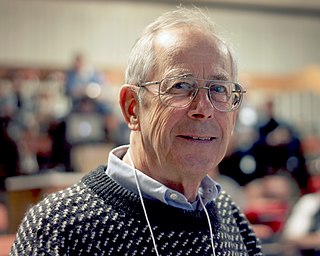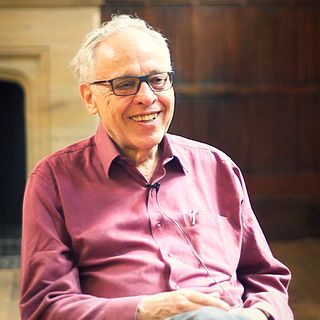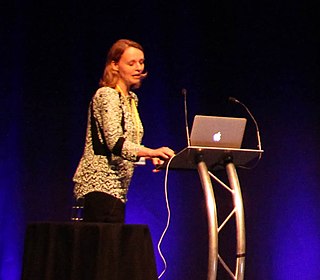
The Big Bang was the initiation of the continuing expansion of the universe from a state of high density and temperature. It was first proposed as a physical theory in 1931 by Roman Catholic priest and physicist Georges Lemaître when he suggested the universe emerged from a "primeval atom". Various cosmological models of the Big Bang explain the evolution of the observable universe from the earliest known periods through its subsequent large-scale form. These models offer a comprehensive explanation for a broad range of observed phenomena, including the abundance of light elements, the cosmic microwave background (CMB) radiation, and large-scale structure. The overall uniformity of the universe, known as the flatness problem, is explained through cosmic inflation: a sudden and very rapid expansion of space during the earliest moments. However, physics currently lacks a widely accepted theory of quantum gravity that can successfully model the earliest conditions of the Big Bang.

The cosmos is an alternative name for the universe or its nature or order. Usage of the word cosmos implies viewing the universe as a complex and orderly system or entity.

Astrophysics is a science that employs the methods and principles of physics and chemistry in the study of astronomical objects and phenomena. Among the subjects studied are the Sun, other stars, galaxies, extrasolar planets, the interstellar medium and the cosmic microwave background. Emissions from these objects are examined across all parts of the electromagnetic spectrum, and the properties examined include luminosity, density, temperature, and chemical composition. Because astrophysics is a very broad subject, astrophysicists apply concepts and methods from many disciplines of physics, including classical mechanics, electromagnetism, statistical mechanics, thermodynamics, quantum mechanics, relativity, nuclear and particle physics, and atomic and molecular physics.

Jaan Einasto is an Estonian astrophysicist and one of the discoverers of the large-scale structure of the Universe.

Phillip James Edwin Peebles is a Canadian-American astrophysicist, astronomer, and theoretical cosmologist who is currently the Albert Einstein Professor in Science, emeritus, at Princeton University. He is widely regarded as one of the world's leading theoretical cosmologists in the period since 1970, with major theoretical contributions to primordial nucleosynthesis, dark matter, the cosmic microwave background, and structure formation.

Cosmology is a branch of physics and metaphysics dealing with the nature of the universe, the cosmos. The term cosmology was first used in English in 1656 in Thomas Blount's Glossographia, and in 1731 taken up in Latin by German philosopher Christian Wolff, in Cosmologia Generalis. Religious or mythological cosmology is a body of beliefs based on mythological, religious, and esoteric literature and traditions of creation myths and eschatology. In the science of astronomy, cosmology is concerned with the study of the chronology of the universe.

Joseph Ivor Silk FRS is a British-American astrophysicist. He was the Savilian Chair of Astronomy at the University of Oxford from 1999 to September 2011.
Cosmological natural selection, also called the fecund universes, is a hypothesis proposed by Lee Smolin intended as a scientific alternative to the anthropic principle. It addresses the problem of complexity in our universe, which is largely unexplained. The hypothesis suggests that a process analogous to biological natural selection applies at the grandest of scales. Smolin published the idea in 1992 and summarized it in a book aimed at a lay audience called The Life of the Cosmos.

Carlos Silvestre Frenk is a Mexican-British cosmologist. Frenk graduated from the National Autonomous University of Mexico and the University of Cambridge and spent his early research career in the United States, before settling permanently in the United Kingdom. He joined the Durham University Department of Physics in 1986 and since 2001 has served as the Ogden Professor of Fundamental Physics at Durham University.
Peter Coles is a theoretical cosmologist at Maynooth University. He studies the large scale structure of our Universe.

Katherine Freese is a theoretical astrophysicist. She is currently a professor of physics at the University of Texas at Austin, where she holds the Jeff and Gail Kodosky Endowed Chair in Physics. She is known for her work in theoretical cosmology at the interface of particle physics and astrophysics.

In cosmology, primordial black holes (PBHs) are hypothetical black holes that formed soon after the Big Bang. In the inflationary era and early radiation-dominated universe, extremely dense pockets of subatomic matter may have been tightly packed to the point of gravitational collapse, creating primordial black holes without the supernova compression typically needed to make black holes today. Because the creation of primordial black holes would pre-date the first stars, they are not limited to the narrow mass range of stellar black holes.

Hiranya Vajramani Peiris is a British astrophysicist at the University of Cambridge, where she holds the Professorship of Astrophysics (1909). She is best known for her work on the cosmic microwave background radiation, and interdisciplinary links between cosmology and high-energy physics. She was one of 27 scientists who received the Breakthrough Prize in Fundamental Physics in 2018 for their "detailed maps of the early universe."

Joanna Dunkley is a British astrophysicist and Professor of Physics at Princeton University. She works on the origin of the Universe and the Cosmic microwave background (CMB) using the Atacama Cosmology Telescope, the Simons Observatory and the Large Synoptic Survey Telescope (LSST).
Juna Kollmeier is an astrophysicist from the US. She is currently employed at the Carnegie Institution for Science and is the director of the fifth phase of the Sloan Digital Sky Survey, which made its first observations in October, 2020. She served as the director of the Canadian Institute for Theoretical Astrophysics, located at the University of Toronto, from 2021 to 2024.

Renée Hložek is a South African cosmologist, Professor of Astronomy & Astrophysics at the Dunlap Institute for Astronomy & Astrophysics at the University of Toronto, and an Azrieli Global Scholar within the Canadian Institute for Advanced Research. She studies the cosmic microwave background, Type Ia supernova and baryon acoustic oscillations. She is a Sloan Research Fellow in 2020. Hložek identifies as bisexual.
Jamie S. Farnes is a British cosmologist, astrophysicist, and radio astronomer based at the University of Oxford. He studies dark energy, dark matter, cosmic magnetic fields, and the large-scale structure of the universe. In 2018, it was announced by Oxford that Farnes may have simultaneously solved both the dark energy and dark matter problems, using a new negative mass dark fluid toy model that "brings balance to the universe".
Ana Achúcarro Jiménez is a Spanish researcher, academic, and professor of particle astrophysics and quantum field theory at the University of Leiden in Leiden, Netherlands. Her research considers the early universe, supergravity, black holes and solitons.
Shirley Ho is an American astrophysicist and machine learning expert, currently at the Center for Computational Astrophysics at Flatiron Institute in NYC and at the New York University and the Carnegie Mellon University. Ho also has visiting appointment at Princeton University.

Nathalie Palanque-Delabrouille,, is a French cosmologist. During her career as a researcher in particle physics, she has taken part in several large-scale experiments. Her work has been recognized several times including the Irène Joliot-Curie Prize, the appointment as Knight of the Legion of Honor and her election to the French Academy of Sciences.














